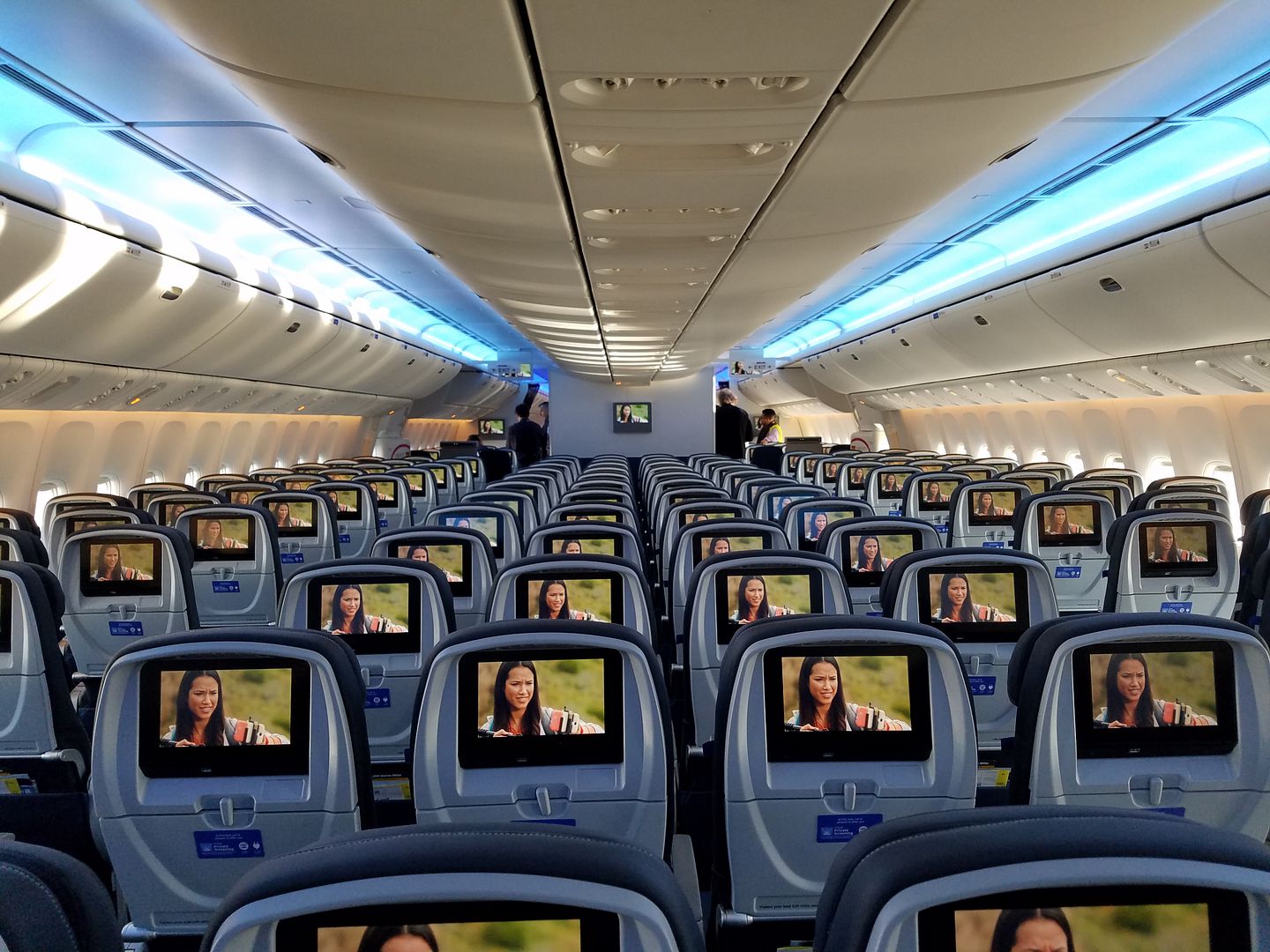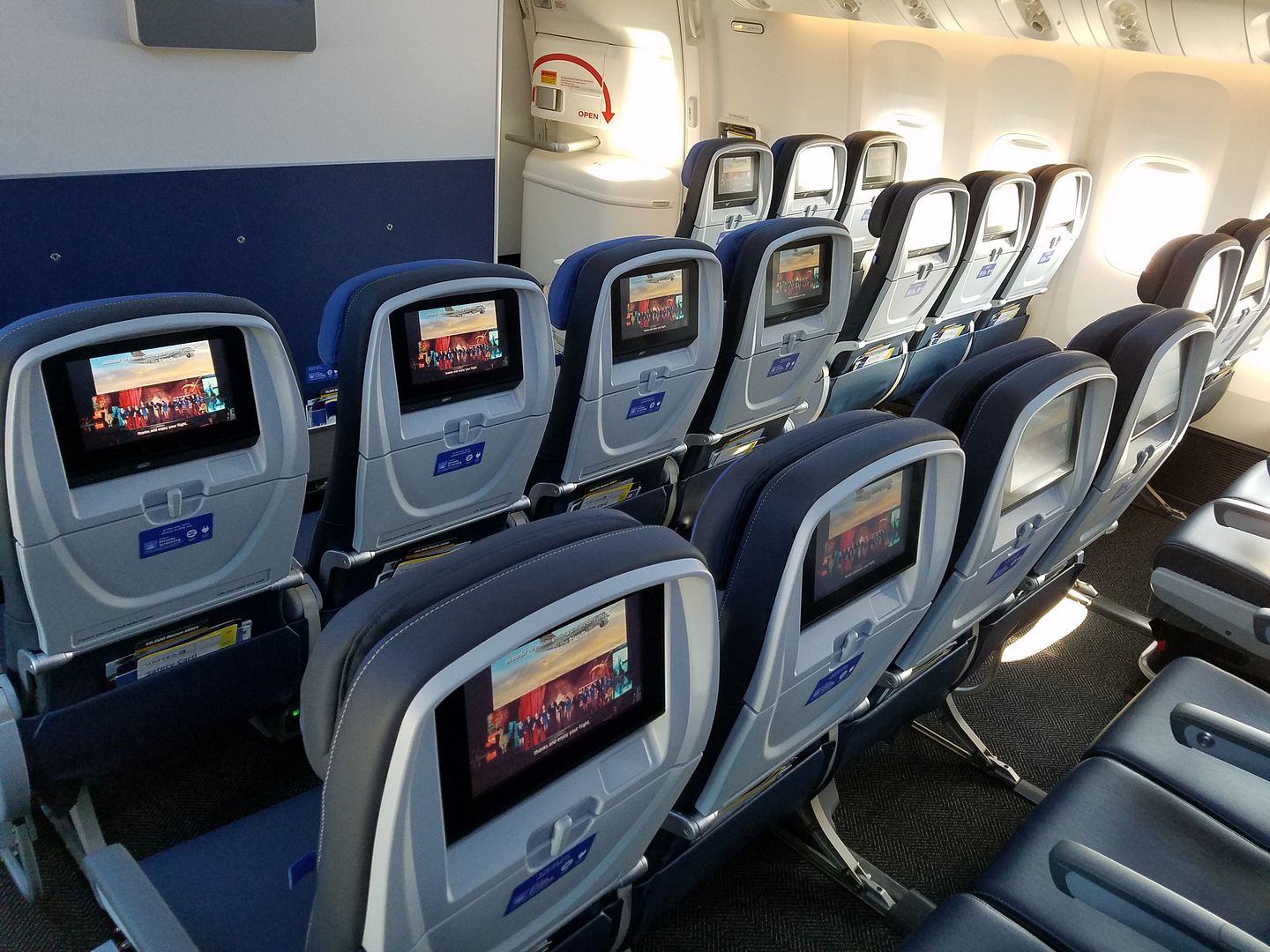The FAA reauthorization bill being considered by Congress includes a provision requiring the FAA to set minimum seat size regulations.
The regulation of seat width and legroom is part of a five-year extension of federal aviation programs announced early Saturday by Republican and Democratic leaders of the House and Senate committees that oversee the nation’s air travel.
Congress faces a Sept. 30 deadline to keep FAA programs running. The Senate will also need to take up the bill this week or both chambers will need to pass a short-term extension.
Politicians are claiming this is going to be a boon for travelers. Florida Democrat Senator Bill Nelson declares “Relief could soon be on the way for weary airline passengers facing smaller and smaller seats.” Nothing could be further from the truth. These regulations will either do nothing, or they’ll help protect the major US airlines from low cost carrier competition. They won’t help travelers.
Seat Pitch (Legroom) Regulation is an Attack on Low Cost Carriers, Will Help Majors Raise Fares
The standard amount of distance between seats in the U.S. has been 31 inches for many years. That’s the distance from seat back to seat back or ‘pitch’. Over the last few years the major airlines excluding Southwest have moved towards offering at least some seats at 30 inches.
- American Airlines considered 29 inches for some seats but faced push back. They kept the same number of seats by reducing how many extra legroom ‘Main Cabin Extra’ seats they offer.
- And claimed that 30 inches is as good as 31 because they’re using uncomfortable seats with less padding to ensure you keep the same amount of room.

American Airlines Boeing 737 MAX Economy
As much as I don’t like 30 inch pitch, it’s worth noting that this is the amount of legroom offered by British Airways and Lufthansa in business class on intra-European flights. And it’s hardly the least amount of legroom offered by airlines in the United States.

British Airways Club Europe
Spirit Airlines and Frontier offer as little as 28 inches of pitch, the distance from seat back to seat back. They also offer seats with greater legroom at additional charge. These airlines are also the primary driver of lower fares.
One of two things will happen,
- Any final seat pitch regulation will set standards tighter than what Spirit and Frontier offer today, so they will have no effect on the US market.
- Regulation will require greater pitch than what Spirit and Frontier offer, limiting their ability to compete as effectively with the major airlines and to drop fares as low as they are today. This will benefit Delta, American, and United and will mean higher fares.
Seat Width Regulation Will Preserve the Status Quo
Seat width regulation isn’t likely to change anything for travelers either. Boeing 737s have offered three seats on either side of the aisle for decades. Seat width on these narrowbodies that squeezes slightly under 17 inches isn’t going to change.
Where things have gotten worse is on widebodies. Moving from 9 seats abreast on a Boeing 777 to 10 abreast as American and United have done means narrower seats, though still over 16 inches. (Delta remains at 9 seats on their 777s.)

United Boeing 777-300ER Economy

United Airlines Economy
However this has become a world standard. 10-abreast 777s is the same configuration offered by Air France and Emirates and many other major airlines in the world. That practice isn’t going to be overturned by regulation least of which by regulations issued by a Republican Department of Transportation.
Ultimately seat size regulation in the U.S. will be meaningless or it will turn into a tool to limit low cost carrier competition to the benefit of the major airlines.
Wishing for a better passenger experience you don’t have to pay more for doesn’t make it so. And expecting politicians to do more than grandstand, and for a legislative and regulatory process that won’t tilt towards those with the best lobbyists, isn’t how the world works.


I think Gary is right. Minimum pitch won’t be greater than 29”. Minimum width won’t be greater than 16.5”. They set the bottom in the race to the bottom. It might actually accelerate the race to the bottom.
Just when we thought the government was the answer to all of our problems…
once again, politicians trying to look like they are doing something for us
Politicians preening for votes. What do you expect?
How about a minimum of 31” and 17” on all new planes put into service starting 7/1/19.
I do think something needs to be done. Surely 10 accords impedes evacuation. Is it any different than fire dept regs?
Gary is absolutely right: these regulations will protect the major US airlines from low cost carrier competition, the same way that US companies are protected from domestic and foreign competitors that use child labor, have deadly working conditions, and so on.
And that is a great thing. No business, airlines included, should be allowed to complete by being inhumane. That’s the definition of civilization, and is a fundamental tenet of capitalism.
It’s nice to know that I won’t be seeing a seat pith of 25″ one day.
I fully agree that setting the seat pitch below the current levels used by Spirit and Frontier would be bad for US consumers. But I would note that seat pitch is more complicated that most folks think; pitch just measures “the space between a point on one seat and the same point on the seat in front of it.” You can design a seat — and many new airline seats ARE designed this way — where you can have the same “pitch” but a significant amount of extra legroom. Hopefully, these congressmen know this, but I doubt it!
Totally agree.
@Gary et al, There are clearly many more than two possibilities for potential seat regulation. An obvious one you omitted is the regulations could limit pitch and width to what Spirit and Frontier provide currently. The possibilities and permutations of any potential regulation are endless.
Most comments seem to come from the camp of all regulation is bad and leads to unfavorable results, but until a proposal is on the table and open to comment, we don’t know what the effects on air fares or anything else might be. Let’s see a proposed regulation and then comment on its pros and cons.
Personally, I’d like to see anything that calls a halt to the trend of jamming more and more people onto the same airframe through tighter and tighter seating arrangements. As someone who pays for my own tickets, that’s a good thing even if it leads to slightly higher fares. Enough is enough. If there is a way to do that without regulation, then let’s hear it. And of course airfares are determined by many factors.
Where I think the government could really help us is through some regulation of frequent flyer programs. Those programs take our money in exchange for transportation and the promise of future benefits. But those programs and promised benefits can be eliminated at any time without notice and for any reason or no reason at all. Some requirement of good faith and fair dealing, minimum notice requirements, and other consumer protections (bad words to conservatives) ought to be required. Sure, depending on the extent of any restrictions, that might encourage airlines to be even more stingy with the benefits offered. But there is always a trade off for increased certainty and insurance against bad outcomes.
More important, How do you keep the big person sitting next to you from oozing over into your space? Lots of Big guys like to sit with their legs spread apart. This means that one leg is going to be rubbing your leg for the entire flight! EEEWWWWEE…
Bring it on Big Gov.
We boys in The Commercial Aviation Ivory Towers love it!
Dug needs all the help he can get, especially when oil hits $100 a barrel.
Gary – At least try to be objective. It’s not the Reptilian Party nor is it the Libtardarian Party and it’s not the Democrat Party but the DemocratIC Party. FAKE NEWS!
If the person next to me in the 16-inch seat occupies the whole armrest, am I allowed to gently stroke his/her arm, and if she/he is pretty hold his/her hand?